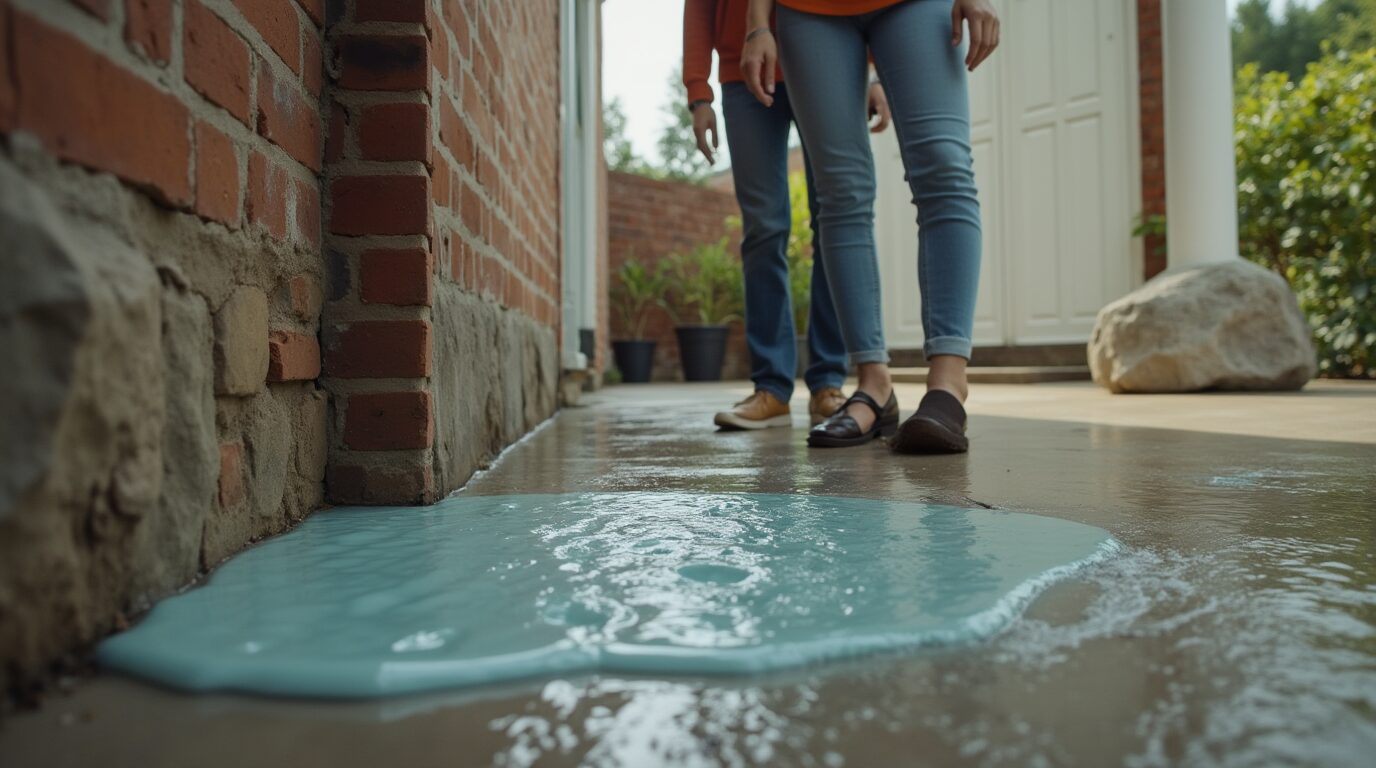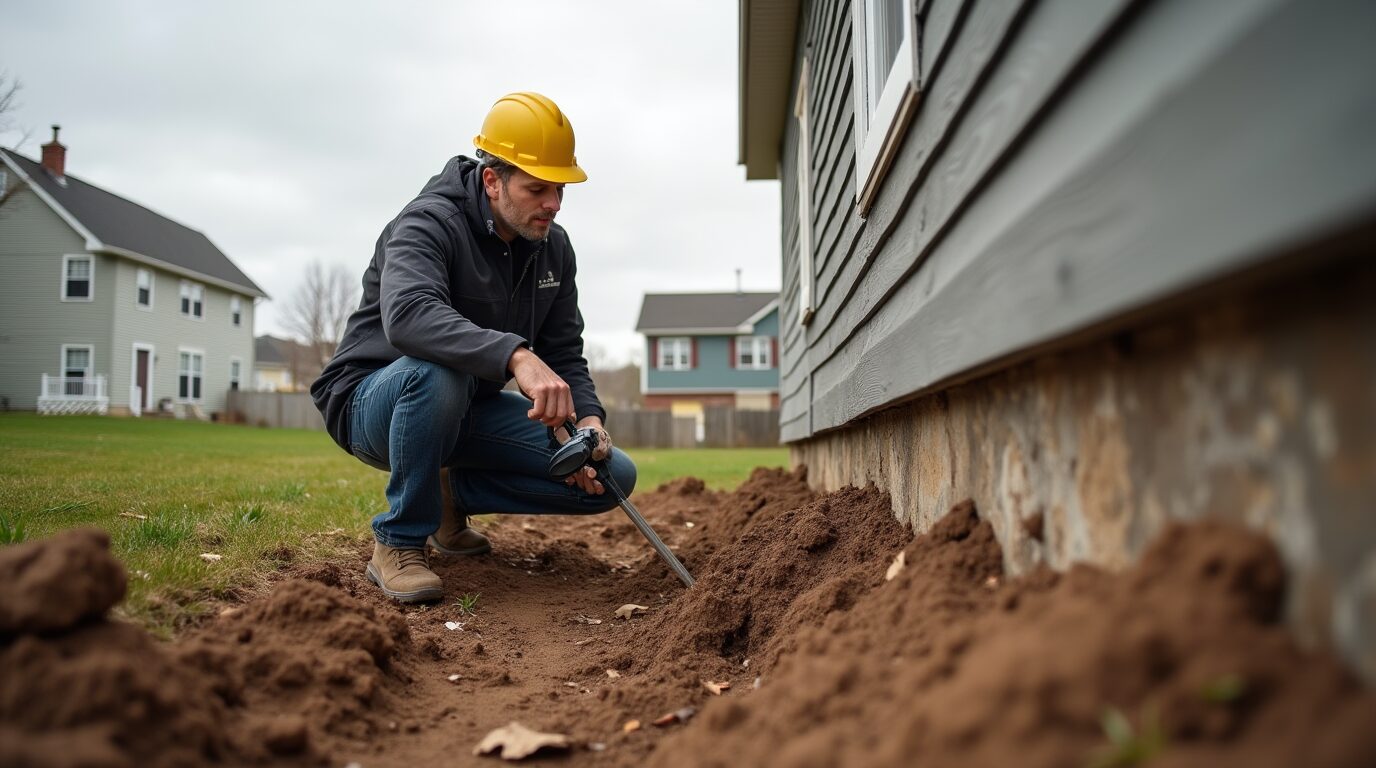
By Mike Porco / in 911 water damage experts, water damage, water damage company, water damage experts, water damage removal, water damage restoration /
Signs Of Water Damage From Foundation Cracks
By: 911 Water Damage Experts
Small foundation cracks may look harmless at first glance, but they often act as hidden conduits for water, mould, and structural decay.
In older Canadian homes, shifting soils and freeze-thaw cycles widen tiny fissures until moisture spreads through walls and flooring. Early detection saves thousands in repair costs and protects indoor air quality.
Let’s get right into it!
Visible Indicators Inside The Home
Musty Odours And Mould Growth On Baseboards
A damp, earthy smell usually appears before any visible stain forms. Mould spores thrive when relative humidity exceeds sixty per cent, and health experts link prolonged exposure to respiratory irritation and allergic reactions. Catching the scent early prompts timely investigation.
Efflorescence On Basement Walls
White, powdery salt deposits signal that water evaporated from the concrete surface, leaving minerals behind. Efflorescence does not harm the wall itself, but it reveals consistent moisture ingress that can degrade reinforcing steel over time.
Peeling Paint Or Bubbling Drywall
Moisture breaks the bond between paint film and substrate, causing flaking or blistering across wall surfaces. When drywall absorbs water, it swells and warps, often appearing as soft, spongy sections under light finger pressure.
Warping Or Cupping Hardwood Floors
Water that seeps upward can distort wood fibres, creating raised edges on floorboards. Canadian Wood Council studies note that hardwood swells by up to eight per cent in width when moisture content rises from six to fourteen per cent.
Exterior Clues Around The Foundation
Soil Subsidence And Gaps Near Footings
If soil pulls away from concrete after prolonged drought or frost heave, lateral support weakens, and cracks may widen. Filling gaps with compacted backfill and improving drainage prevents further movement.
Staining Or Streaks On Poured Concrete Surfaces
Dark vertical streaks indicate repeated water flow across the wall. The stains show that downspouts or grading direct water toward, not away from, the house—a condition that should be corrected immediately.
Insect Activity Attracted To Moisture
Carpenter ants and termites gravitate to damp wood framing adjacent to cracks. Pest inspectors often discover insect tunnels within centimetres of water-seeping fissures. Eliminating moisture starves colonies and protects structural elements.
Crumbling Mortar Joints In Masonry Foundations
Mortar softens when exposed to continual wetting and drying. Over time, joints lose cohesion, allowing blocks or bricks to shift. Re-pointing with fresh mortar and adding exterior waterproofing restores stability.
Repair Options And Prevention
Epoxy And Polyurethane Injection Methods
Technicians inject two-part epoxy for structural repair or hydrophobic polyurethane for active leaks. Polyurethane foam expands up to thirty times its liquid volume, filling voids and creating a watertight seal that lasts decades when installed correctly.
Exterior Excavation And Waterproof Membranes
Excavating to footing depth allows crews to coat walls with elastomeric membranes and install drainage boards. Though more invasive and expensive, this method stops lateral water pressure and guards against new cracks.
Installing Proper Drainage And Grading
Extending downspouts two metres from the foundation and grading soil to slope away at a minimum five-degree angle keeps surface water from pooling. The Institute for Catastrophic Loss Reduction reports that proper grading can cut basement water complaints by half.
Annual Inspection Checklist For Homeowners
Walk the perimeter each spring, look for new cracks wider than three millimetres, ensure eavestroughs are clear, and operate dehumidifiers to maintain basement humidity below fifty per cent. Early action limits damage progression.
Conclusion
Foundation cracks rarely fix themselves. By spotting early warning signs inside and outside the home, homeowners can act before moisture undermines structural integrity. Implementing proven repair techniques and maintaining sound drainage protects property value and keeps basements healthy, dry, and ready for day-to-day living.
FAQs
1. What Causes Foundation Cracks In The First Place?
Hydrostatic pressure, soil movement, and repeated freeze-thaw cycles are primary culprits.
2. Are Hairline Cracks A Serious Problem?
Even minor fissures can widen and allow moisture entry over time, so monitor them closely.
3. How Do I Measure Crack Movement?
Place a dated mark on both sides of the crack and re-check monthly, or use a clear acrylic gauge for precise tracking.
4. Will Interior Sealants Stop Water Permanently?
Interior coatings provide a temporary barrier; exterior waterproofing offers more durable protection.
5. Does Homeowners’ Insurance Cover Foundation Crack Repairs?
Insurance usually excludes gradual foundation damage unless caused by a sudden insured peril.
6. What Is The Best Season For Exterior Waterproofing?
Late spring through early fall offers drier soil conditions and optimal membrane curing temperatures.
7. Can A Dehumidifier Solve Moisture Issues On Its Own?
A dehumidifier lowers humidity but does not block new water entering through cracks.
8. How Long Does Polyurethane Injection Last?
Properly installed injections remain effective for more than twenty years in most cases.
9. Are Structural Engineers Required For All Crack Repairs?
Hire an engineer when cracks exceed six millimetres wide, display lateral displacement, or suggest structural settlement.
10. How Much Does Foundation Crack Repair Cost?
Interior injection starts around six hundred dollars, whereas full exterior excavation can exceed ten thousand dollars.
If you have any questions about water damage and water damage restoration feel free to call us at 1-833-WE-DRY-IT or chat with us in near real-time on our Facebook fan page.


